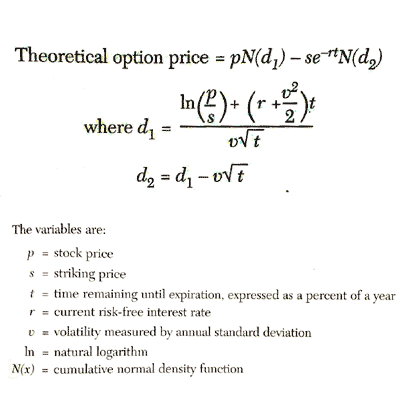break even analysis advantages and disadvantages: Break-even Charts Assumptions Advantages Disadvantages
Содержание

Profits at different levels of activity can also be ascertained. Selling price will remain constant even though there may be competition or change in volume of production. Fixed costs will remain constant and will not change with the change in level of output. This chart shows the inter-relationship between cost, volume and profit.
It denotes the level of safety that the company enjoys before incurring losses (i.e., falling below the breakeven level). The margin of safety of the firm can be known from this breakeven chart. Margin of safety can be known by deducting breakeven sales from the actual sales. It plays an important role as an indicator as to how the margin can be increased.
Break-even Point: Meaning, Advantages, Disadvantages and Examples
Calculate the number of products a company needs to manufacture to attain a profit target of Rs.10,000. The fixed costs amount to Rs. 24,000 and the same is to increase by Rs. 8,000 if the output exceeds 4,000 units. In this respect it may be mentioned that if this chart contains only the details of appropriation of profit it may be called profit-appropriations BEC.
A break even chart does not take into consideration capital employed which is a very important factor in taking managerial decisions. Therefore, managerial decisions on the basis of break even chart may not be reliable. The effect of various product mixes on profits cannot be” studied from a single break even chart. The chart is very useful for forecasting costs and profits at various volumes of sales. When the break even sales are very low, with large angle of incidence, it indicates that the firm is enjoying business stability and in that case margin of safety sales will also be high.
- Alternatively, the calculation for a break-even point in sales dollars happens by dividing the total fixed costs by the contribution margin ratio.
- As we know that break-even analysis is a cost-revenue-output relationship, it has a limited arena to determine the viability of any project.
- A break even chart is based on a number of assumptions which may not hold good.
- Variable product or services cost will not always remain the same.
- The area below the horizontal axis is the ‘loss area’ and that above it is the ‘profit area’.
Further, while discussing, the term marginal costing and break even analysis may appear frequently. Marginal cost is the extra cost incurred in producing one extra unit of a good. This can help determine how variable costs can affect the volume of production in a business unit. Calculating the breakeven point is a key monetary analysis tool used by business house owners. Small enterprise owners can use the calculation to determine how many product items they need to promote at a given value pointto break even. They can also change the variable prices for each unit by including more automation to the production process.
Concept of Breakeven Point
Break-even analysis is the process of calculating and evaluating an entity’s margin of safety based on collected revenues and corresponding costs. To put it another way, the research demonstrates how many sales are required to cover the cost of doing business. Higher MoS provides freedom to the company’s management to alter the selling price of their product to gain market share from its competitors. Selling price remain constant even though there exists competition or any change in the volume of production. The last limitation of Break Even Analysis is that it does not consider the sales of products at different prices. It assumes that all produced units will be sold at the same price.

Many businesses make the use of promotional activities to increase their sales. A Break Even Analysis will provide you with a rough idea of whether your promotional activity will be beneficial for you or not. The break-even analysis is used to examine the relation between the fixed cost, variable cost, and revenue generated by a company. Usually, a company with a low fixed cost will have a low break-even point of sale. It is quite possible to produce different types of products for a firm and in that case, a Multi-product Break-Even Chart may be constructed for the firm as a whole. Naturally, in that case, BEP will be that point where the Average contribution line will intersect the fixed cost line assuming that there will be no change in sales-mix.
It is a common strategy that companies use to set the price of their products. Such a pricing strategy helps managers when preparing business and marketing plans and when entering a new market. We can also say that achieving economies of scale is one more objective of breakeven pricing. If the contribution is more than the fixed expenses, profit shall arise and if the contribution is less than the fixed expenses, loss shall arise. In this example there is a profit of Rs. 1,00,000 when the output is 50,000 units.
Advantages
Similarly variable costs which need immediate payment, are plotted as usual. But care should be taken if any credit transaction is included in the variable cost. Break-even point has a broader scope in business other than just recovering the total cost by revenue. A minimum break-even point is considered to be optimal for the company. The C-V-P analysis assists in making a choice between two courses of action to make versus to buy. If the variable cost is less than the price that has to be paid to an outside supplier, it may be better to manufacture than to buy.
Absorption Costing vs. Variable Costing: What’s the Difference? – Investopedia
Absorption Costing vs. Variable Costing: What’s the Difference?.
Posted: Sat, 25 Mar 2017 20:53:12 GMT [source]
He is a CFA charterholder as well as holding FINRA Series 7, 55 & 63 licenses. He currently researches and teaches economic sociology and the social studies of finance at the Hebrew University in Jerusalem. Therefore, contribution at 100% effective capacity is extension, the fixed overheads increase by Rs. 1,00,000 and amount to Rs. 5,00 Rs. 1,00,000). Represent the above figures on a break-even chart and determine from the chart the breakeven point. To show the deviations of actual profit from anticipated profit relative profitability under conditions of high or low demand.
Contribution Margin
It shows the break-even point and also indicates the estimated cost and estimated profit or loss at various volumes of activity. A break-even chart is a graphical representation of marginal costing. It is considered to be one of the most useful graphic presentation of accounting data. It is a readable reporting device that would otherwise require voluminous reports and tables to make the accounting data meaningful to the management. Variable product or services cost will not always remain the same.
How does mortgage rate buydown work? – The Washington Post
How does mortgage rate buydown work?.
Posted: Wed, 14 Sep 2022 07:00:00 GMT [source]
So, Company A would need to sell 6,250 tennis racquets to break even. The offers that appear in this table are from partnerships from which Investopedia receives compensation. This compensation may impact how and where listings appear. Investopedia does not include all offers available in the marketplace.
A break-even evaluation is a useful tool for figuring out at what level your organization, or a new services or products, might be worthwhile. Put one other method, it’s a monetary calculation used to determine the variety of products or services you need to sell to no less than cover your prices. When you’ve broken even, you might be neither losing cash nor being profitable, but all of your costs have been covered. The contribution margin should be comparatively high, since it have to be sufficient to also cowl mounted bills and administrative overhead.
Break-even point https://1investing.in/ is more appropriate in the case of analysis of a single product at a time; it fails to do so appropriately in the case of a multi-product scenario. Many times it isn’t easy to classify a cost as fixed or variable. It provides the business with a minimum sales level which the company needs to achieve to avoid losses. Let us calculate and compare the breakeven point with the margin of safety using the following data. The lower the breakeven quantity, the better it is for the companies, while the higher the margin of safety, the better it is for the company. As the name suggests, the Margin of Safety is the margin between the actual/budgeted sales and the breakeven point.
Bottom Line vs. Top Line: What’s the Difference for Small Business Owners?
In such scenarios, managing break even analysis advantages and disadvantages of safety becomes easier with concepts like break even analysis. That’s because the company will have an idea on the minimum number of products they need to sell to ensure their organization doesn’t undergo any loss. This is particularly useful where the demand for a product is elastic. Now, the problem arises before us is that at what stage the amount of profit will be maximised since the volume of sales are fluctuating. In business, many factors determine if a company will be profitable or not due to the many unexpected risks that lie ahead.
This calculation requires the business to find out promoting price, variable prices and glued costs. Once these numbers are decided, it’s fairly simple to calculate break-even point in items or gross sales value. Say for example, if management decides to enhance the sales price of the product , it would have severe impact on the number of units required to sell before profitability. They may also change the variable costs for each units by adding more updated technology to the production process. Lower variable costs equate to greater profits per unit and reduce the total number that must be produced. If any company taking outsourcing strategy, it may also change the cost structure.
As the level of production increases, the opportunities to gain the benefits of economies of scale with affect unit costs. Selling costs are specially difficult to handle break-even analysis. This is because changes in selling costs are a cause and not a result of changes in output and sales.

Because using that information, you can plan a new price strategy to stay in profit. Before launching a new product the company needs to check the break-even analysis before starting its production and see if the product adds necessary expenditure to the company. Let us understand this equation by taking a break even analysis example mentioned as follows. Before constructing the BEC, let us calculate the P/V ratio of each product first.
ALSO FROM THE TEAM STARTUPOPINIONS
The break-even point is the point at which total revenue and total cost are equal. Break-even analysis determines the number of units or amount of revenue that’s needed to cover your business’s total costs. Variable costs will fluctuate in the same proportion in which the volume of output varies. In other words, prices of variable cost factors i.e., wage rates, price of material etc. will remain unchanged. Under this method, the fixed cost line is drawn parallel to the X-axis.
